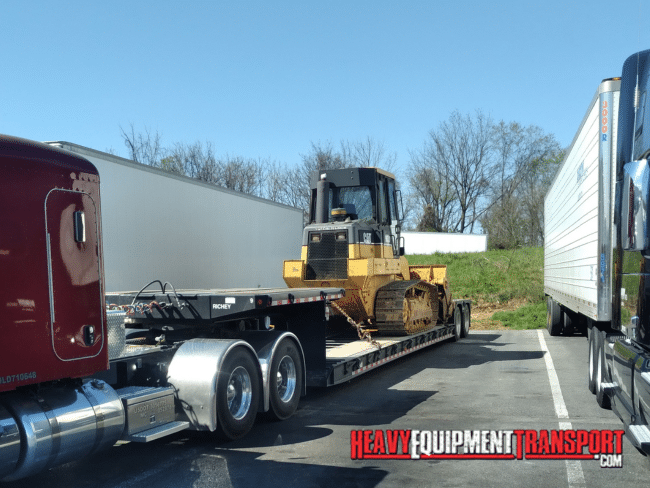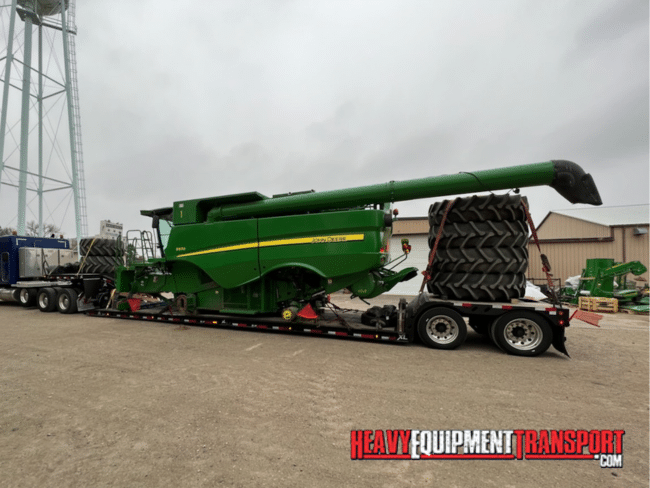What Is Equipment Logistics?

Francisca Olive / July 2023
Most logistics and supply chain experts agree that logistics will be more significant to companies’ success in the next five years. Thus, companies who want to succeed in today’s dynamic market must have a firm grasp of shipping logistics. This article will delve into the fundamentals of equipment logistics.
What Is Equipment Shipping Logistics?
Equipment logistics refers to the inbound and outbound logistics involved in transporting equipment. It is the process of planning, putting into action, and controlling the smooth movement of equipment from its point of origin to its final destination. It involves coordinating equipment movement, storage, and handling to guarantee that it is delivered to the appropriate area at the right time and in the best condition.
Types of Transport Logistics
There are three main types of transport logistics.
● Inbound Logistics
Inbound logistics involves moving equipment and materials from suppliers to the site where they will be used in manufacturing or production. It encompasses moving, storing, and managing raw materials, components, and other inputs necessary for machinery production.
● Outbound Logistics
Outbound logistics involves transporting finished goods, tools, and raw materials from the factory or warehouse to the final consumer or distribution hub. Tasks like transporting goods, storing them, and keeping track of stock are all part of outbound logistics.
● Reverse Logistics
Reverse logistics refers to the handling of returns and exchanges from customers. This involves both inbound and outbound logistics, such as the creation of return labels, the inspection of returned goods, the processing of reimbursements, and the shipment of replacement goods in the case of an exchange.

Transport Your Equipment Today
Heavy Equipment Transport is always available for a quote. Fill out the form or give us a call now! (888) 730-2951
Processes Involved in Shipping Logistics
Logistics involves three key components: transportation, storage, and handling. Logistics relies heavily on transportation, which involves moving machinery from one area to another. It involves deciding which transportation mode to use (trucks, trains, planes, or ships) and planning the most efficient routes and times for transporting the equipment.
Logistics also includes the correct storage of equipment both while it is en route and once it has arrived at its destination. Equipment must be adequately secured and protected from harm during storage, which includes choosing suitable storage facilities like warehouses or storage yards.
Equipment must be transported carefully to guarantee that it arrives at its destination in good condition. Things like loading and unloading machinery, securing it for transit, and employing the right tools and methods can all help reduce the likelihood of damage occurring throughout the handling process.
Challenges of Logistics
Cost management is one of the major challenges in transportation logistics. The costs of shipping, warehousing, and handling equipment may add up quickly, so companies need to find efficient ways to reduce these costs without sacrificing reliability or safety.
Supply chain disruptions, such as transportation delays or sudden changes in supplier availability, can also pose a significant challenge to logistics. Companies should have backup plans to deal with unforeseen circumstances, ensuring equipment is delivered on time.
Also, logistics companies may find it hard to deal with compliance regulations involving handling, transporting, and storing equipment. Failure to comply with regulations can result in fines, legal issues, and damage to a company’s reputation.

Best Practices for Effective Transportation Logistics
● Pick The Right Carrier
Carriers are in charge of transporting equipment from the point of origin to the final destination. It can be hard for many firms to choose a carrier because different industries have varying shipping requirements that must be met to ensure deliveries go off without a hitch. Many factors come into play when determining the best candidate. If you’re shipping equipment overseas, you must find a carrier with those capabilities. It’s also important to consider a carrier’s reputation.
● Optimize Transportation Routes
Optimizing transportation routes helps cut down on travel times and costs. Companies can use routing software to plan the most efficient routes, considering variables like travel time, traffic, and truck capacity.
● Collaborating With Suppliers
Collaborating with customers and suppliers can help make logistics more efficient. A business can work with suppliers to ensure equipment is delivered on schedule and in good condition. Collaborating with customers allows a company to understand what equipment they need.
● Continuous Improvement
Continuously monitoring activities in the logistics process can help companies identify improvement opportunities and implement changes to increase efficiency and reduce costs. Businesses can use key performance indicators and data analytics to identify inefficiencies.
● Technology is Key
Technology is essential to improving transportation logistics. Companies can use logistics software to optimize routes, track inventory, and automate some processes.
Key Takeaway
The key to running a prosperous business is to satisfy consumer needs and stay competitive. This means having a firm grasp of transport logistics and constantly pursuing better solutions to ensure a pleasant delivery experience for customers and drivers.

William Thomas
Heavy Transport Specialist
Being able to lead a team of such talented logistics agents has been a wonderful experience over the past ten years. If you would like to know anything more about the heavy equipment transport services we offer, don't hesitate to give us a call!